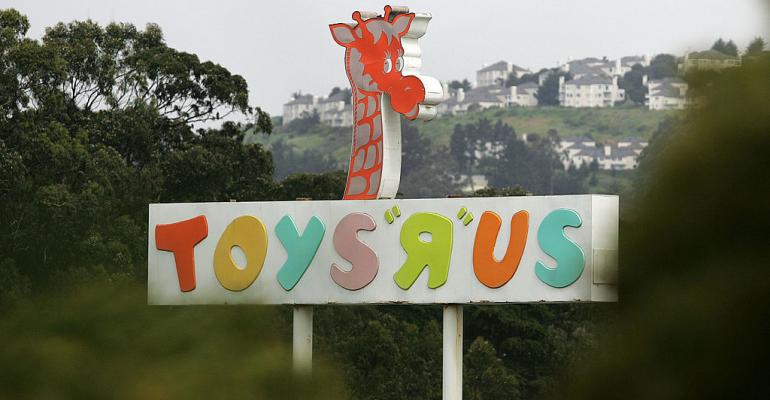Few retail real estate insiders were surprised to hear that Toys ‘R’ Us will close 180 stores in the U.S., especially after the retailer weathered a disappointing holiday shopping season, following a bankruptcy filing in September 2017.
As power center landlords grapple with how they will fill the closing Toys ‘R’ Us and Babies ‘R’ Us locations, some experts say the number of targeted stores is an encouraging sign, being much smaller than expected. And while store closures remain an industry-wide issue, some experts feel that power center landlords still have options to backfill soon-to-be-vacant locations.
“I was surprised that they are keeping as many stores as they are, trying to emerge from bankruptcy,” says Jan Kniffen, CEO of J. Rogers Kniffen Worldwide Enterprises, a New York City-based equity research and financial management consulting firm specializing in retail. “They must have had more cash-positive stores than I thought or they are getting some damn good deals from landlords.”
It was unclear at press time exactly which landlords have the highest exposure to Toys ‘R’ Us and Babies ‘R’ Us stores, which account for about 51.6 percent of the slated closures. Industry professionals say, however, that many landlords had anticipated the kind of disruption in the toy retailing segment that would lead to store closures.
“Landlords have known this was coming for 10 years,” says Scott Holmes, a senior vice president and national director of the national retail group at brokerage firm Marcus & Millichap, adding that many landlords had already priced in a high probability of Toys ‘R’ Us stores going vacant. “Toys ‘R’ Us as a business was slow to adjust and react to a changing marketplace. It was a business-level misstep on their part.”
One aspect of the changing retail real estate business might work in favor of landlords faced with empty storefronts, according to Holmes. Developers have been slow to build new power centers after the last recession, creating demand from tenants looking to expand into high-quality locations. Holmes notes that grocery chain Aldi, off-price department store operator TJX Cos., Hobby Lobby and beauty chain Ulta are among some retailers looking to expand.
Toys ‘R’ Us stores typically average about 35,000 sq. ft., with double-or triple-net leases with 10-year durations, according to industry professionals.
Landlords are also likely to repurpose vacant Toys ‘R’ Us locations to include non-retail uses like medical offices and WeWork units, says Steve Goldberg, president of The Grayson Co., a retail consulting and consumer goods firm.
Beset by more than just e-commerce
For once in the unfolding narrative of how the retail business is coping with contemporary shopping habits, the disruptive influence of e-commerce has not been blamed as the sole culprit for Toys ‘R’ Us’ troubles. Recently, Lutz Muller, CEO of Klosters Trading Corp., a consulting practice specializing in retail business intelligence, noted that the shift from traditional television and cinema to streaming as an entertainment option for the toy consumer market is just as much to blame for disruption in the toy business as e-commerce competition.
Kniffen notes that children have largely moved on to a form of entertainment that is difficult for advertisers to reach, and it is affecting toy sales overall.
“What they play with are computers, iPads and iPhones,” Kniffen says. “They are replacements for toys.”
Meanwhile, at the time of its bankruptcy filing, Toys ‘R’ Us was facing $7.9 billion in debt, most of it tied to its 2005 leveraged buyout by private equity firms KKR and Bain Capital and diversified REIT Vornado Realty Trust. The retailer’s assets at the time of bankruptcy totaled $6.6 billion.
With its footprint of 881 Toys ‘R’ Us and Babies ‘R’ Us stores in the U.S., the company is still a major retailer for vendors such as Hasbro and Mattel, and the stores still attract shoppers looking for greater variety than what Target and Walmart offer, according to Muller. As a result, Toys ‘R’ Us accounts for as much as 25 percent of the overall toy market.
Few industry professionals, however, expect to see Toys ‘R’ Us successfully reinvent itself to compete in a largely omni-channel business. Amazon dominates in digital toy sales, and Walmart now dominates in brick-and-mortar toy sales, Kniffen notes.
“Other retailers in some of the other categories did a better job of blending into an omni-channel presence,” says Holmes. “Toys ‘R’ Us tried to do the old model better and more efficiently than anyone, rather than adopting to the new way.”

